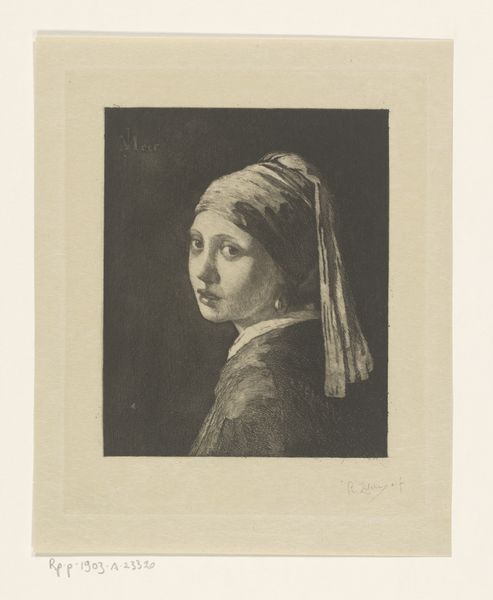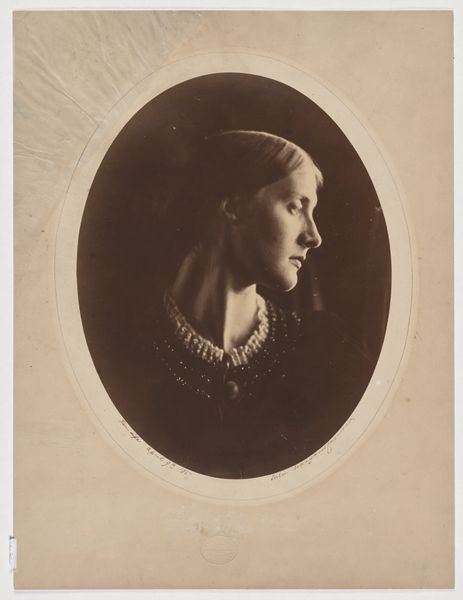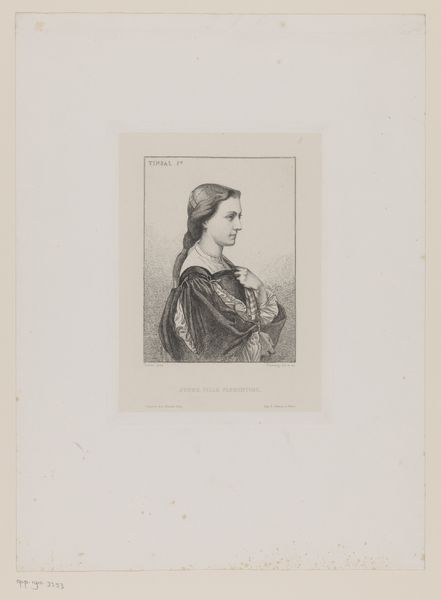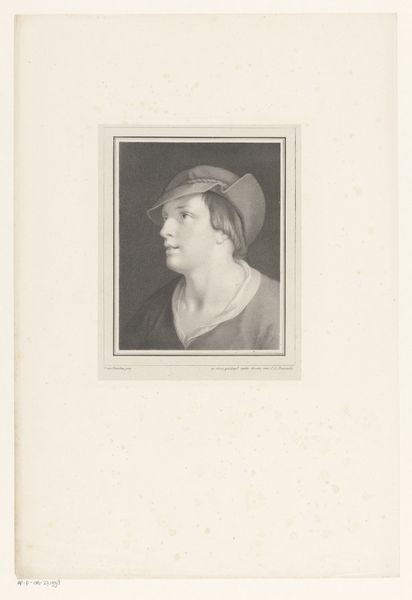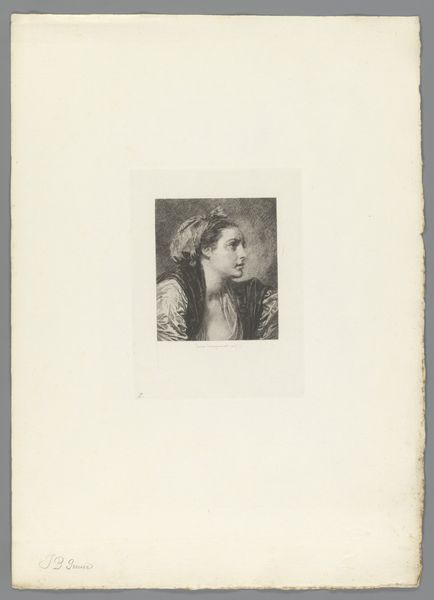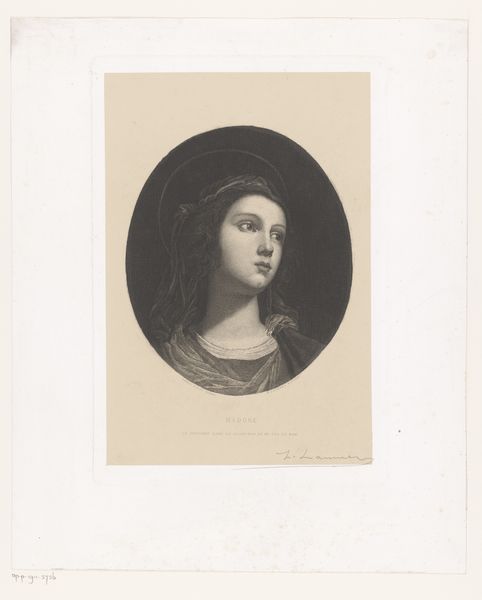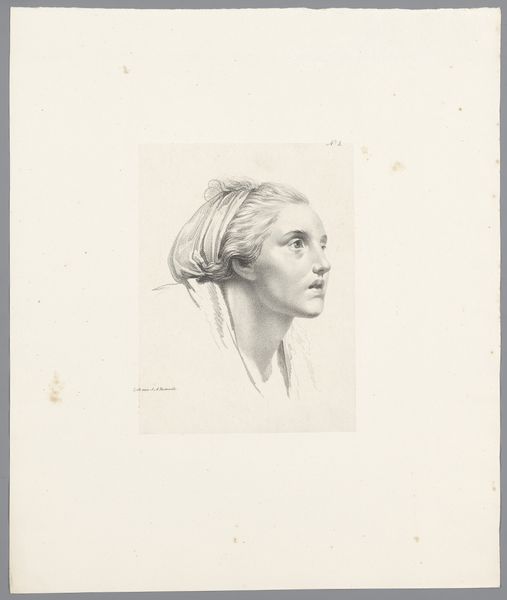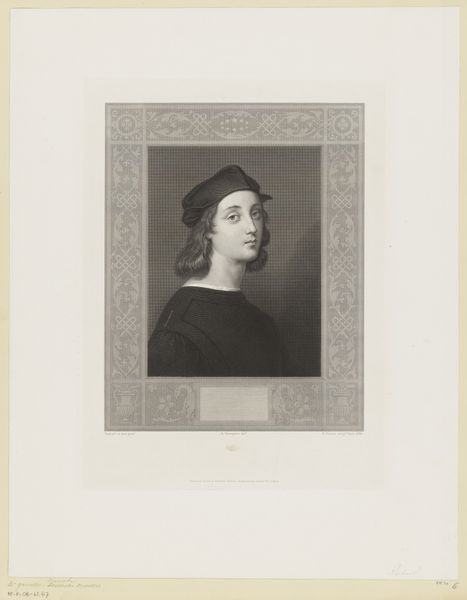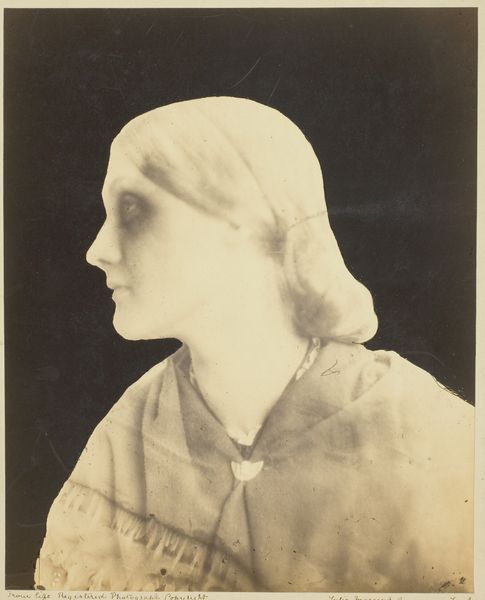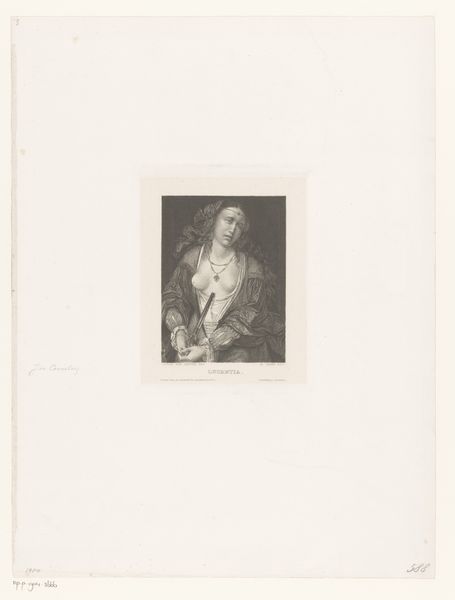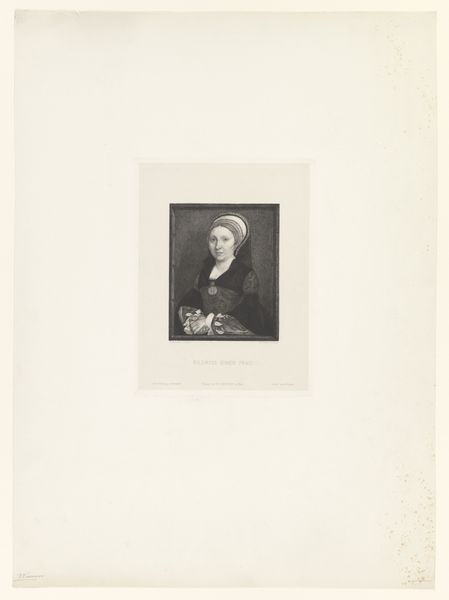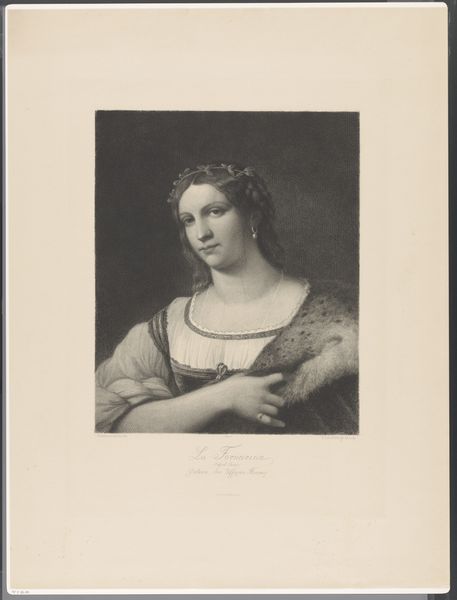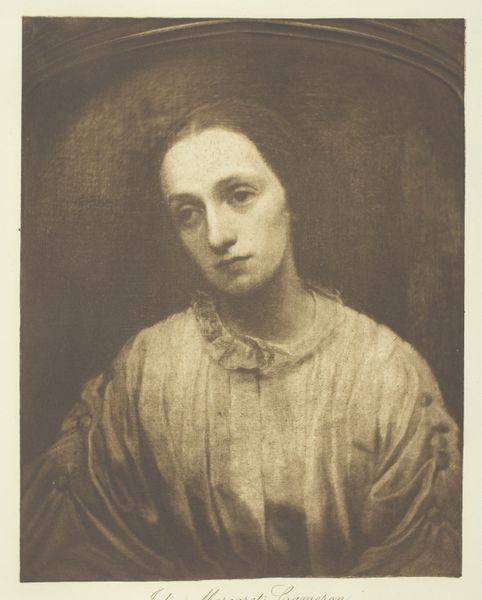
lithograph
#
lithograph
#
history-painting
#
academic-art
#
realism
Dimensions: height 222 mm, width 174 mm
Copyright: Rijks Museum: Open Domain
Editor: So this is "Young Florentine Woman" by Carl August Deis, made sometime between 1833 and 1884. It’s a lithograph, which I find interesting. I always think of lithographs as being sort of... democratic? Given their ease of reproduction, I suppose. What stands out to you about this piece? Curator: The lithographic process itself is central here. Consider the specific labour and the mechanization it implies in image production. How does this reproductive method impact our understanding of "aura" and artistic value? Was this process seen as diminishing the skill of a 'fine artist', by transitioning into mass consumption? Editor: That's interesting! So, thinking about it as less a portrait and more an artifact of a production process... It was meant for consumption, right? Curator: Exactly. And who would have been consuming these lithographs? Was this form accessible across different social strata? Or did the imagery reinforce certain class divisions through consumption habits? Perhaps the clothing's fine detail elevates the subject, targeting the burgeoning middle class who were newly interested in representations of wealth and status. The ‘academic art’ style reinforces the status. Editor: That makes me rethink my initial perception. It seemed like a straightforward historical portrait, but the material tells a bigger story about how art was circulated and consumed at the time. So the labor and access is essential for the meaning... Curator: Precisely. It urges us to question whose stories get told, by what means, and for whom. What stories did lithographs spread in the nineteenth century, and who profited from that? Editor: That makes it so much richer than just a pretty face! Thanks for pointing out the material processes. Curator: My pleasure. It reminds us that the how is just as significant as the what.
Comments
No comments
Be the first to comment and join the conversation on the ultimate creative platform.
